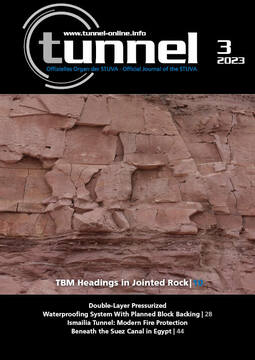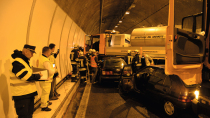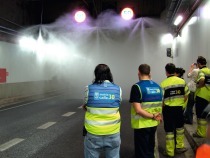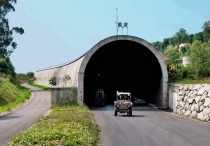Ismailia Tunnel: Modern Fire Protection Beneath the Suez Canal in Egypt
In the course of a large-scale infrastructure programme of the Egyptian government, including the creation of a special economic zone in the Sinai Peninsula, Egyptian construction companies were commissioned to build several tunnels; the construction times of these projects were quite ambitious. The Ismailia Tunnel is the longest link below the Suez Canal and serves to improve access to the Sinai. It consists of two tubes, each about 5 km long, and runs 40 m below the important connection between the Red Sea and the Mediterranean. To protect the structure of the tunnel, which runs under water, the safety concept included a water mist fire-fighting system (FFFS).
Depending on traffic, the tunnel, located 130 km west of Cairo, can be reached in about two hours by car from the Egyptian capital. The Ismailia Tunnel was built by a consortium consisting of two large Egyptian construction companies. Internationally renowned planning offices were involved in the planning; numerous specialised companies from abroad were commissioned.
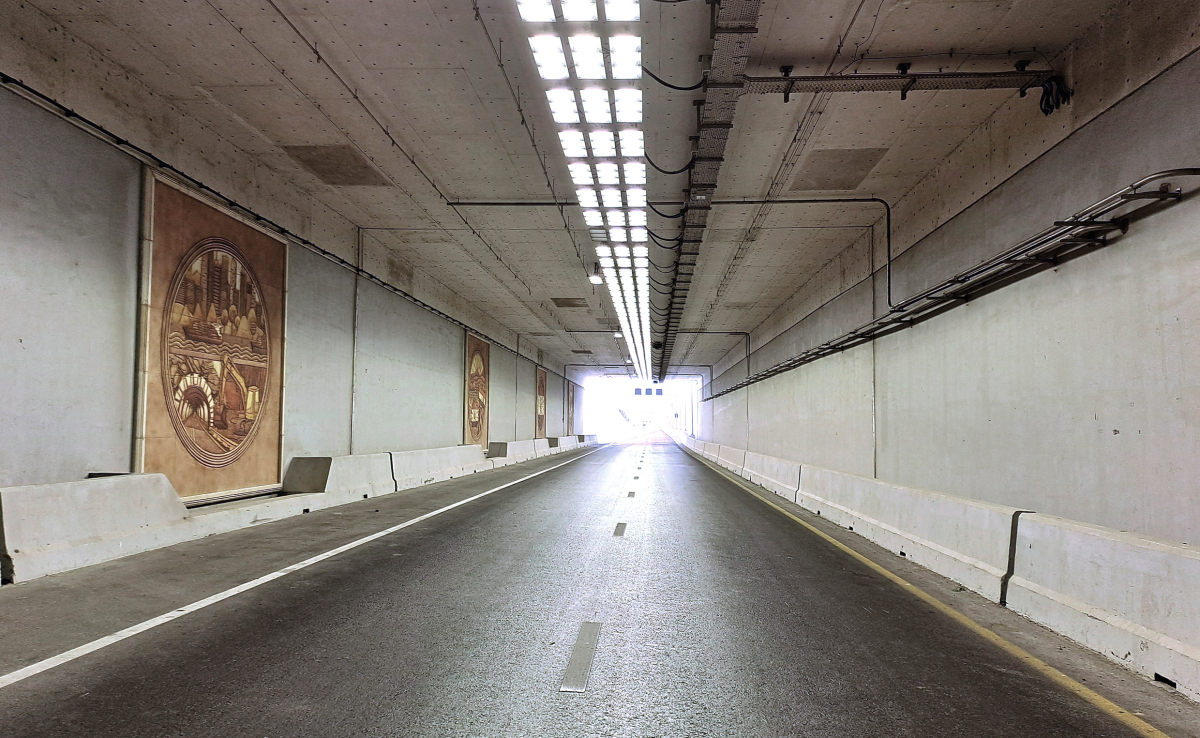 The Ismailia Tunnel runs 40 m below the Suez Canal and provides better access to the Sinai. It consists of two tubes, each 5 km long
The Ismailia Tunnel runs 40 m below the Suez Canal and provides better access to the Sinai. It consists of two tubes, each 5 km long
Credit/Quelle: Fogtec
Water Mist FFFS for the Ismailia Tunnel
The tunnel is accessible to all traffic, including large trucks and tankers. The water mist FFFS planned by Arcadis in the Netherlands had to be successfully tested for a fire load of 200 MW Heat Release Rate (HRR). One reason was certainly the not always immaculate condition of some Egyptian vehicles; anyone travelling on Egyptian roads can often see this with the naked eye. This makes the use of a water mist FFFS all the more important, as it not only ensures a high level of availability, but also protects people in case of fire and provides much better access for the emergency services.
After lengthy negotiations, Fogtec Brandschutz GmbH from Cologne was commissioned to plan, supply, install and commission the water mist FFFS in detail. This was certainly not an easy task for the highly specialised, medium-sized fire protection experts from Cologne, but it was a very exciting one that had to be mastered with the support of their long-standing Egyptian partner.
Everything had to happen very quickly: Even before all the relevant contractual elements were in place, the work started at high speed; clarification of technical details with numerous parties, construction of the two pump stations, preparation of all data sheets, consultation with suppliers as well as the detailed design and calculation of the pipelines – taking into account many other trades in the tunnel – all of which had to be coordinated with each other. No easy task under the premise of a speedy completion of the entire tunnel construction.
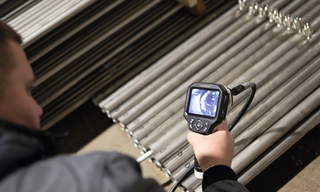 Approx. 30 km of stainless steel piping was prefabricated and shipped to Egypt to reduce the installation time in the tunnel to a minimum
Approx. 30 km of stainless steel piping was prefabricated and shipped to Egypt to reduce the installation time in the tunnel to a minimum
Credit/Quelle: Fogtec
After initial problems – a large team in Germany and Egypt with experienced project managers had to be set up at lightning speed, the construction site was set up, materials and tools were procured, etc. – all the necessary components and piping material for the construction of a fire-fighting system were procured. In a very short time, about 30 km of stainless steel piping had to be prefabricated and shipped to Egypt. This reduced the installation time in the tunnel to a minimum. Acceptance tests of the main components followed with the participation of the client and the consultant, which were successful at Fogtec in Cologne. Prior to this, the fire test protocols by IFAB GmbH, a specialised fire protection expert especially for water mist and also for tunnels, had already been submitted and approved.
With the exception of a few operational interruptions and public holidays, the installation was carried out in 24-hour shifts, 7 days a week. A substantial part of the water mist FFFS was installed in the gallery underneath the carriageway, the supply and nozzle lines in the tunnel itself.
Pump Stations and Section Valves
Two pump stations at the portals of the tunnel, each with redundantly designed high-pressure pumps, supply the required water volume and pressure for the activation of 3 x 25 m long water mist sections at a maximum outlet pressure of 120 bar. Also redundantly designed booster pumps provide the necessary inlet pressure for the plunger pumps, and a filter unit catches all particles over 100 µm before they enter the piping system. The local control units of the pump station were also supplied by Fogtec and integrated into the holistic control system of the tunnel before commissioning.
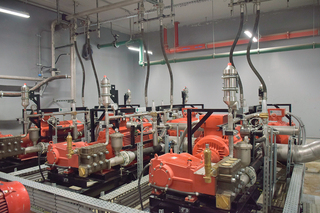 Two pump stations at the portals of the tunnel supply the required amount of water and pressure for the activation of
Two pump stations at the portals of the tunnel supply the required amount of water and pressure for the activation of
3 x 25 m long water mist sections
Credit/Quelle: Fogtec
The main pipelines, made of highly corrosion-resistant duplex steel, connect the pump stations to the section valves, which, when opened, allow water to flow into the corresponding sections as an extinguishing agent. The size of the pipeline, with an outer diameter of only 88.9 mm, could be made so small because the high system pressures mean that considerable pressure losses can be accepted. The main pipe was welded to ensure the longest possible service life with very little maintenance.
Fogtec‘s patented sectional valves, of which a total of 404 were installed in the Ismailia tunnel, allow automated remote maintenance without spraying water or requiring people to access the valve. Thus, during operation, without any additional costs, the valves can be maintained automatically and achieve a very high availability of this so essential component of the system.
Numerous Realistic Fire Tests
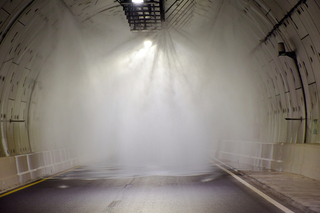 All tests and acceptance procedures within the scope of commissioning, including several pressure and spray tests, were carried out successfully
All tests and acceptance procedures within the scope of commissioning, including several pressure and spray tests, were carried out successfully
Credit/Quelle: Fogtec
The water mist nozzles and their arrangement have been successfully tested in numerous real fire trials in the past. In contrast to traditional low-pressure sprinkler systems, water mist is ideally suited to fighting liquid fires as well as solid fires.The design in the Ismailia tunnel is based on the design of the large-scale fire tests and has been approved by the STUVA, the IFAB as well as the involved consulting companies of the customers in the course of various acceptances. Fogtec has also carried out numerous fire tests with batteries in the recent past, particularly as part of the SUVEREN research project (safety in underground urban transport areas with the use of new energy sources); here it has been shown that high-pressure water mist has shown the best results as a fire-fighting medium. In view of the increasing number of electric vehicles, the Ismailia tunnel is well prepared for such fires in the future.
Finally, the commissioning by Fogtec specialists on site followed: All tests and acceptance trials, including several pressure and spray tests, were successfully carried out and the system could be handed over to the satisfaction of all parties involved.
The first water mist FFFS in an African tunnel thus protects an important part of the Egyptian infrastructure, especially thanks to the good cooperation of the teams from different nations under sometimes demanding circumstances.

